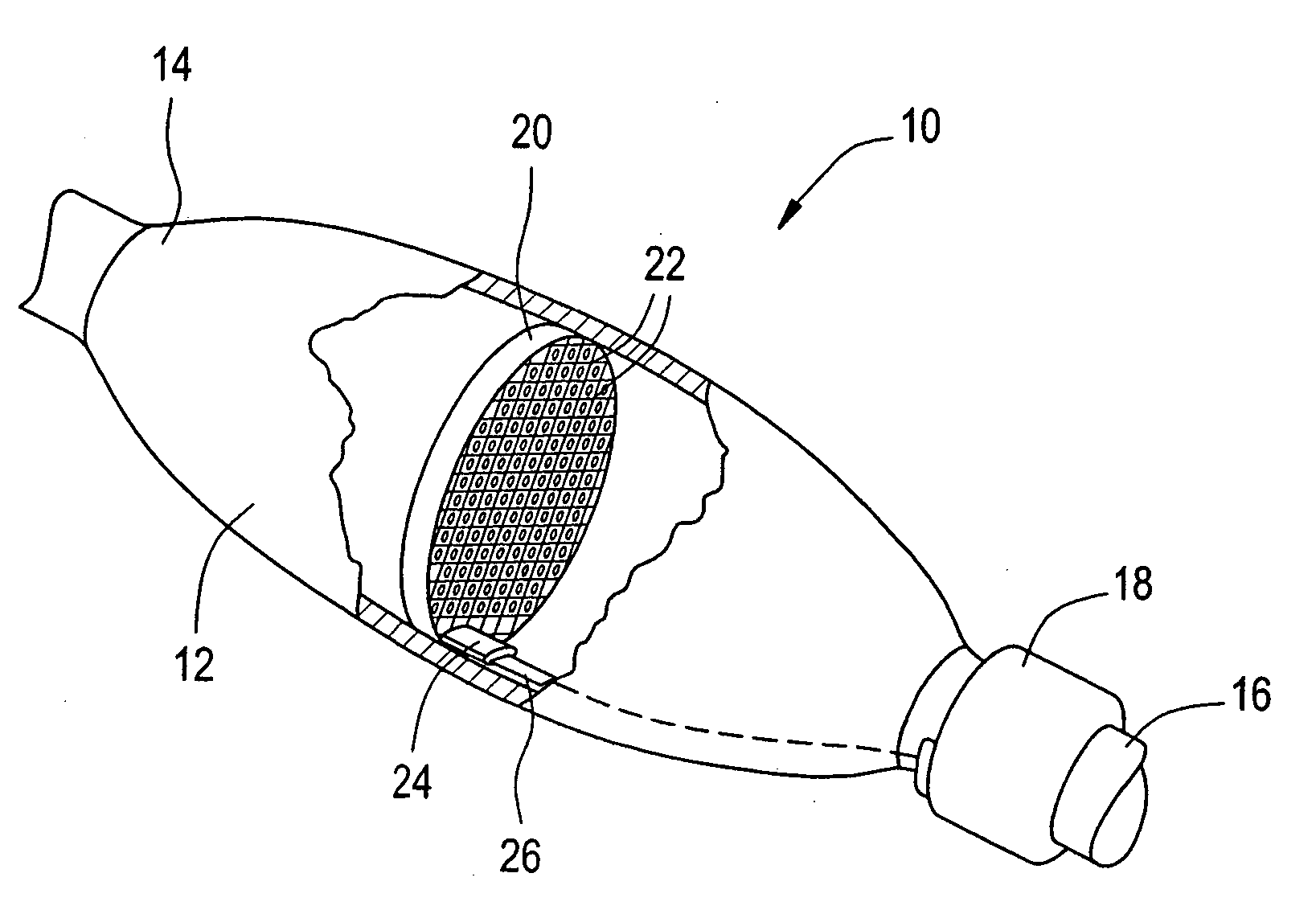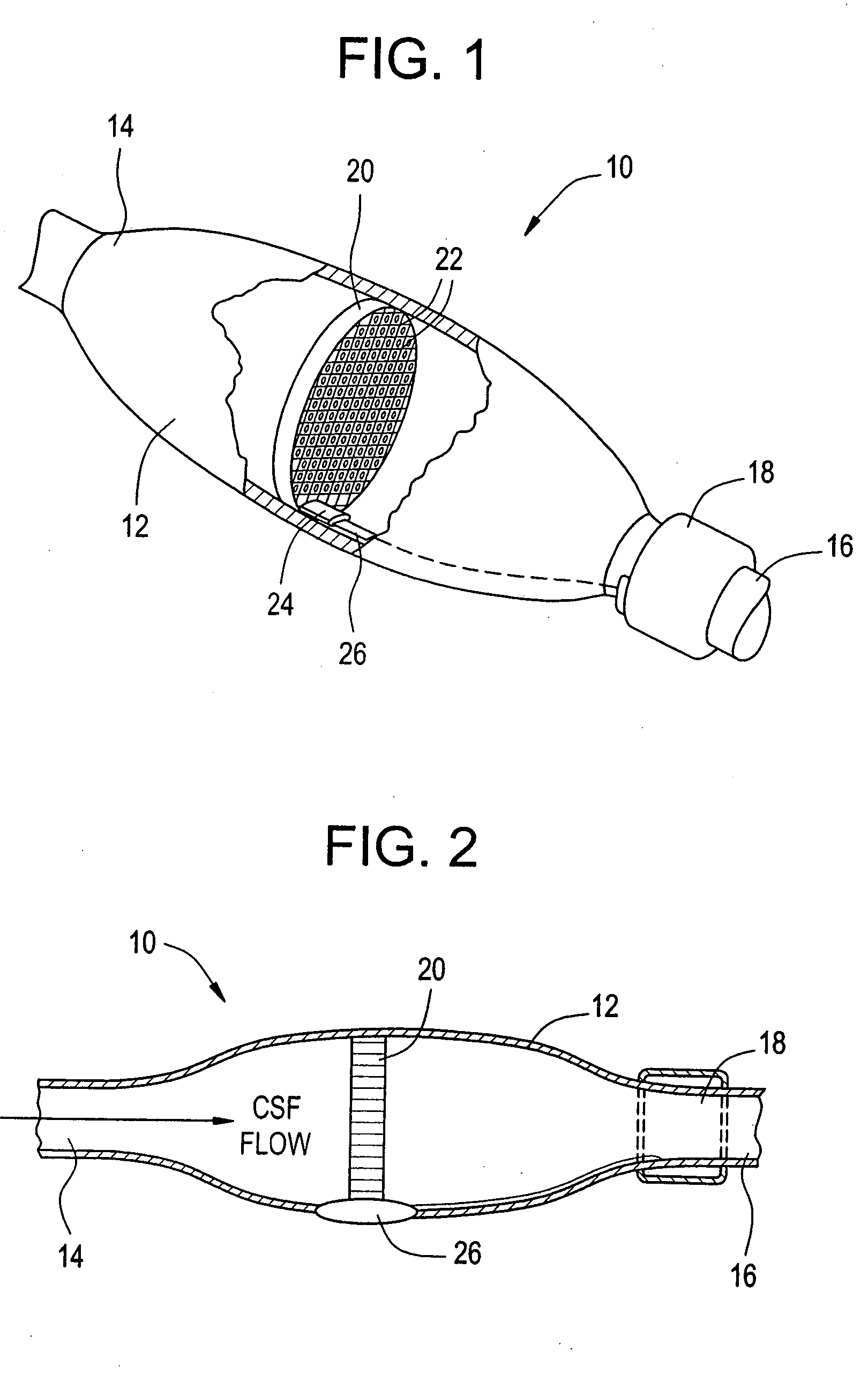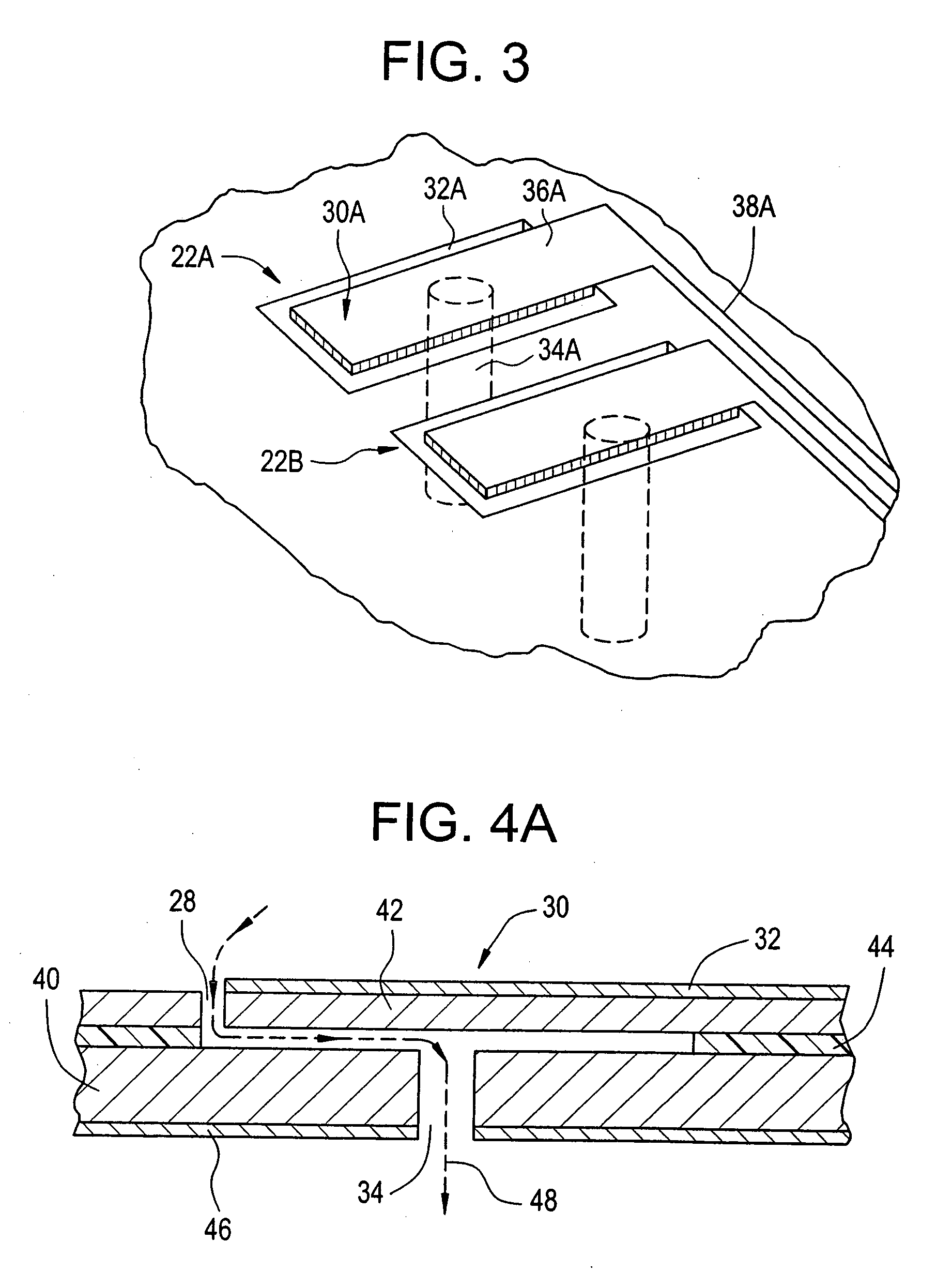Waveform sensing and regulating fluid flow valve
a waveform sensing and fluid flow technology, applied in the field of hydrocephalus treatment, can solve the problems of inability to accurately control the flow of fluid, and inability to use mechanisms in real situations, so as to achieve the effect of precise control of the flow and easy control of the volume and rate of fluid transpor
- Summary
- Abstract
- Description
- Claims
- Application Information
AI Technical Summary
Benefits of technology
Problems solved by technology
Method used
Image
Examples
Embodiment Construction
[0048]FIG. 1 is a schematic view of a shunt valve 10 having a valve body 12, a proximal end 14, a distal end 16, and a power supply and electronic controls 18. The shunt valve comprises a valve assembly 20 with a plurality of deflectable valve elements 22, a connector 24, and associated electrical conduits 26 that serve to couple the valve assembly 20 with the power supply and electrical controls 18. The term “deflectable” and variants thereof as used in this specification is intended to include bending, shifting, swinging, stretching and elastic deformation as well as other forms of physical movement.
[0049]FIG. 2 a schematic sectional view of the shunt valve. The valve body 12 houses the shunt valve assembly 20 which has a plurality of deflectable valve elements 22. The shunt valve assembly 20 is designed to facilitate the passage of cerebrospinal fluid (CSF) from the proximal end 14 to the distal end 16 when the pressure differential between the ventricle and the distal cavity is...
PUM
 Login to View More
Login to View More Abstract
Description
Claims
Application Information
 Login to View More
Login to View More - R&D
- Intellectual Property
- Life Sciences
- Materials
- Tech Scout
- Unparalleled Data Quality
- Higher Quality Content
- 60% Fewer Hallucinations
Browse by: Latest US Patents, China's latest patents, Technical Efficacy Thesaurus, Application Domain, Technology Topic, Popular Technical Reports.
© 2025 PatSnap. All rights reserved.Legal|Privacy policy|Modern Slavery Act Transparency Statement|Sitemap|About US| Contact US: help@patsnap.com



